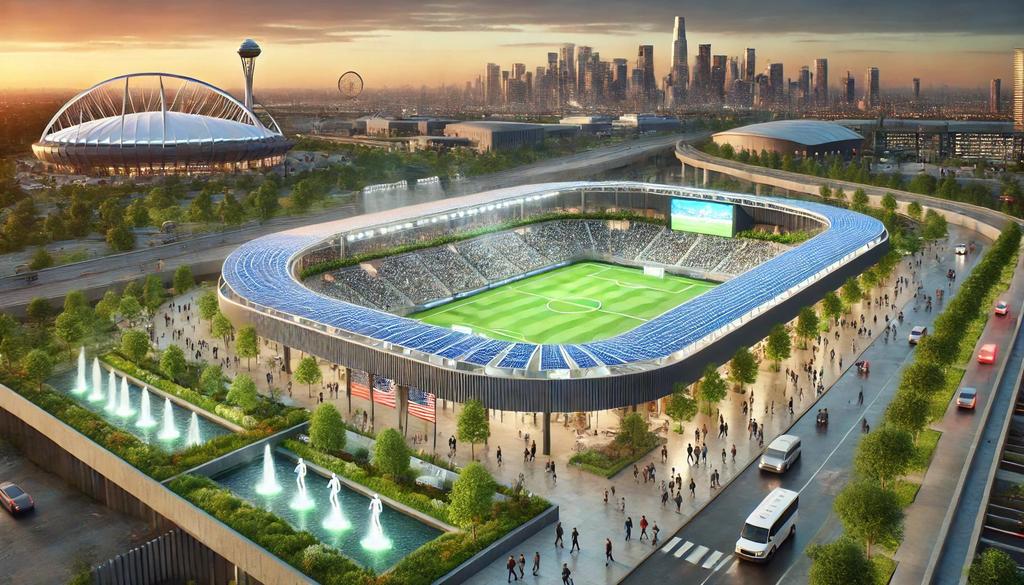Modern sport depends on large stadiums — massive structures built to hold tens of thousands of fans, light entire fields, and broadcast to global audiences. For decades, these buildings symbolized progress, but they also carried a quiet cost. High energy demand, heavy materials, and constant maintenance made them among the least sustainable public spaces. Now, a shift is under way. The Green Stadium Movement is an effort to bring these facilities in line with global climate goals. It mirrors a broader social trend where even unrelated sectors, like the 32 cards casino game, have begun to embrace digital formats that reduce their physical and environmental footprint.
Understanding the Environmental Weight of Stadiums
A typical stadium runs like a small city. It uses electricity, water, transportation links, and waste systems at scale. The carbon output from a single season of matches can exceed that of an entire neighborhood. Lighting, air conditioning, and refrigeration are constant draws on the grid. Add to that the travel of players, staff, and supporters, and the total emissions grow fast.
Historically, little of this was considered part of the cost of sports. Developers aimed to create capacity and visibility, not efficiency. Many older stadiums were built before sustainability was part of public debate. Today, that attitude no longer fits. Governments, sports federations, and local communities are all asking how such facilities can operate without adding to the climate problem.
The Push Toward Carbon Neutrality
The drive for carbon-neutral arenas began in small pilot projects about a decade ago. Architects and engineers started rethinking what a stadium could be — not just as a place to watch games but as a functioning part of an energy system. The goal shifted from cutting costs to cutting emissions.
A carbon-neutral stadium balances what it emits with what it saves or offsets. This means clean power sources, lower material footprints, and efficient operations. It also means accounting for the full life cycle of the venue — from construction materials to waste management and transportation patterns. The process is gradual. Few venues can eliminate their carbon output completely, but the gap between business as usual and net zero is closing.
Energy and Infrastructure
Energy sits at the core of the transition. Modern arenas now use a mix of solar panels, on-site batteries, and regional wind supply to meet demand. Some connect to local microgrids that store surplus power when the stadium is inactive. LEDs have replaced traditional lighting systems, reducing electricity use by more than half.
Climate control has also evolved. Instead of heating or cooling the entire interior, zones are managed based on occupancy. Smart sensors track where crowds gather and adjust airflow. Simple changes, such as allowing more natural ventilation or using reflective roof materials, have a measurable effect.
Water efficiency follows the same logic. Many stadiums now collect rainwater for cleaning and irrigation. Recycled wastewater is used for toilets and maintenance. These methods are less about technology and more about integration — designing the venue as part of a local ecosystem rather than separate from it.
Materials and Construction
The materials used to build large venues carry huge embedded emissions. Concrete and steel are among the most carbon-heavy products on earth. The Green Stadium Movement tackles this by replacing or reducing them. Recycled aggregates, lighter steel frames, and timber structures are becoming common.
Some stadiums take the circular route. Instead of demolishing old stands, they repurpose them. Temporary seating can be dismantled and moved to other sites. Even pitch materials are reused or composted. This approach saves both money and emissions, creating a model for other large-scale developments.
Transport and Crowd Management
The carbon cost of a stadium is not limited to the building itself. How people arrive and leave also matters. Many new designs are built around public transport lines. Parking is reduced to encourage buses, trains, or bikes. Some clubs promote carpooling or provide electric charging points.
Crowd management is another factor. Events are scheduled to spread out travel demand, and ticketing systems include incentives for sustainable travel. While these steps might seem small, they change habits over time and reduce the total environmental impact of every event.
Measuring Progress
One challenge for the movement is how to measure “carbon neutral.” Different cities and organizations use different standards. Some focus only on energy, while others include waste, water, and fan travel. As data improves, comparisons become easier. The trend is toward full transparency — publishing emissions figures, targets, and progress reports.
Fans are part of this change too. Awareness campaigns around recycling, waste sorting, and energy use during games help create a shared sense of responsibility. This social side is often overlooked, but it is central to lasting change.
Looking Ahead
Carbon neutrality in sports will not happen overnight. Many existing stadiums are locked into older systems and need deep retrofitting. But the direction is clear. Future arenas will act as both sports venues and energy producers. They will connect with city infrastructure, feed power back into local grids, and operate with minimal waste.
The Green Stadium Movement shows that environmental responsibility and public entertainment do not have to conflict. It also reflects a larger truth about climate action — that progress often begins with design choices, not slogans. Each structure built today will stand for decades, shaping both the game and the world around it.

